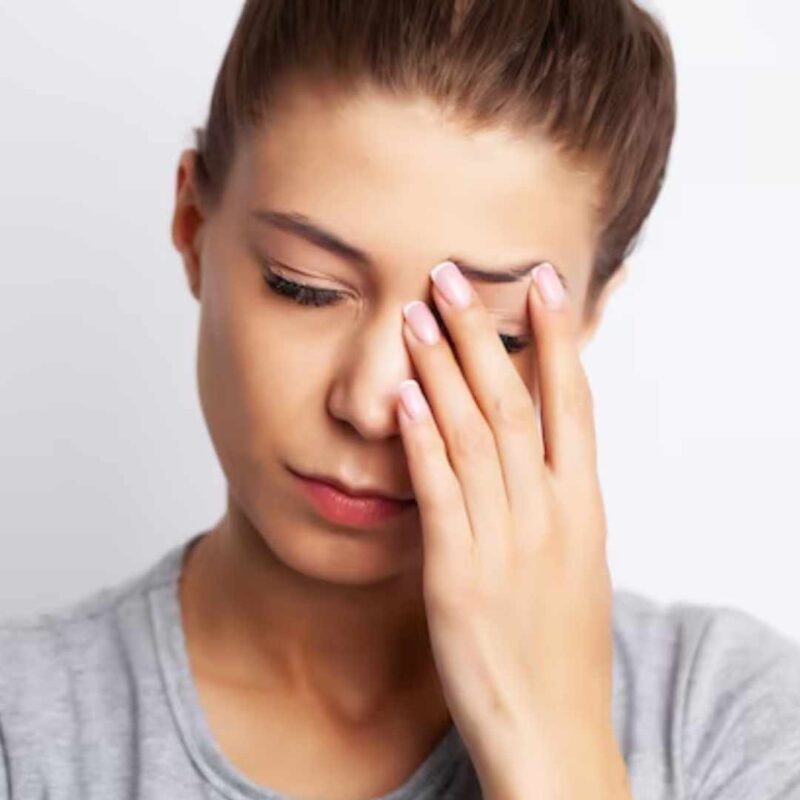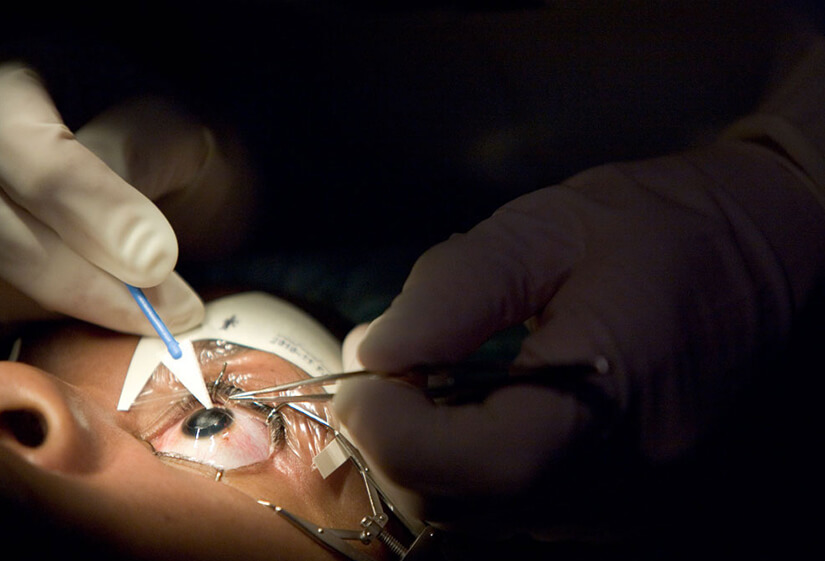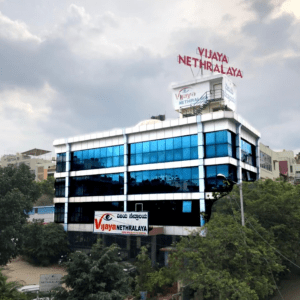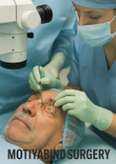Photophobia is not a standalone condition but a symptom commonly associated with various underlying causes. Understanding its root and addressing it appropriately is crucial for individuals grappling with this sensitivity.
Understanding the Causes of Photophobia:
Light Sensitivity Conditions:
Conditions like iritis, conjunctivitis, and corneal abrasion can trigger photophobia. Moreover, exploring these conditions not only sheds light on effective management strategies but also provides valuable insights into the intricate relationship between underlying eye issues and heightened sensitivity to light. By delving into these specific conditions, individuals can gain a deeper understanding of how to navigate and alleviate Light Sensitivities symptoms successfully.
Eye Disorders:
Certain eye disorders, such as cataracts and glaucoma, may contribute to heightened sensitivity to light. Unpacking these connections helps individuals comprehend their unique circumstances.

Migraines and Headaches:
Light Sensitivities is frequently identified as a symptom accompanying migraines and headaches. By delving into the intricate relationship between these issues, we can gain valuable insights into holistic treatment approaches.
Symptoms of Photophobia:
Squinting and Blinking
Individuals experiencing Light Sensitivities often exhibit involuntary reactions, such as squinting or excessive blinking. By recognizing these symptoms, healthcare professionals and individuals alike can facilitate early identification.
Eye Pain:
Understanding the correlation between Light Sensitivities and eye pain is crucial for effective symptom management. In this section, we will delve into these interconnections, shedding light on the intricate relationship between these two aspects.
Avoidance of Light:
Examining the behavioral aspects, such as avoiding light sources, offers insights into how individuals adapt to their light-sensitive condition.
Diagnosis and Treatment Options:
Comprehensive Eye Exam
A detailed eye examination is essential for diagnosing the root cause of Light Sensitivities. Consequently, this section emphasizes the importance of regular eye check-ups, as they play a pivotal role in maintaining ocular health and identifying potential issues early on.
Prescription Eyewear:
Exploring the role of prescription eyewear in managing Light Sensitivities provides practical solutions for individuals seeking relief. Additionally, understanding how prescription eyewear can address light sensitivity enhances the spectrum of options available for effective symptom management.
Medications:
Delving into medications, both prescription and over-the-counter, elucidates the diverse approaches to alleviating Light Sensitivities symptoms.
Preventive Measures for Photophobia:
Sunglasses and Hats:
Sunglasses and hats are not just fashion accessories but crucial tools for preventing this. Unpacking their role highlights the significance of proactive measures.
Adjusting Lighting Conditions:
Making adjustments to ambient lighting conditions, both at home and work, contributes to a more comfortable environment for those with this.
Managing Screen Time
In the digital age, managing screen time becomes paramount. Moreover, this section explores how individuals can strike a balance without exacerbating their light sensitivity, offering insights into practical strategies for maintaining a harmonious relationship with screens and mitigating the impact on visual discomfort.
Living with Photophobia: Coping Strategies
Creating a Darkened Environment
Creating a darkened environment at home or work is a proactive strategy for individuals with this. Furthermore, this section offers practical tips for achieving this, empowering individuals to implement effective measures that cater to their light sensitivity needs.
Using Technology Filters
Technology filters, such as blue light filters on screens, can significantly reduce light sensitivity. Incorporating these into daily life is discussed for maximum effectiveness.
Support Groups and Counseling
Emotional support is integral to coping with Light Sensitivities. Consequently, this section explores the benefits of support groups and counseling in managing the psychological impact, highlighting the importance of addressing not only the physical symptoms but also the emotional well-being of individuals affected by light sensitivity.
Photophobia in Children: Special Considerations:
Identifying Light Sensitivities in Kids
Recognizing photophobia in children requires a nuanced approach. Additionally, this section guides parents and caregivers in identifying potential signs, providing valuable insights for a comprehensive understanding of how light sensitivity may manifest in younger individuals.
Pediatric Eye Exams
Regular eye exams for children become crucial in preventing and managing photophobia. Furthermore, this section emphasizes the importance of early intervention, underscoring the proactive role that timely eye assessments play in safeguarding children’s visual health and addressing potential light sensitivity issues promptly.
Parental Support
Parents play a pivotal role in supporting children with Light Sensitivities. In this section, tips for providing effective support are discussed, offering valuable insights into practical strategies that can enhance the well-being and comfort of children dealing with light sensitivity. Additionally, these insights serve as a resource for parents navigating the challenges associated with their children’s specific needs in managing photophobia.
Natural Remedies and Lifestyle Changes:
Dietary Adjustments:
Certain dietary changes may positively impact photophobia symptoms. Moreover, exploring these adjustments provides individuals with additional tools for self-management, offering a holistic approach that considers lifestyle factors in mitigating the effects of light sensitivity.
Stress Management
Stress can exacerbate photophobia. Furthermore, this section delves into stress management techniques for a holistic approach to symptom alleviation, providing individuals with practical strategies to not only address the immediate impact of stress but also contribute to a comprehensive and sustained reduction in light sensitivity symptoms.
Adequate Sleep
The connection between sleep and photophobia is explored, underscoring the importance of establishing healthy sleep patterns. Additionally, this section emphasizes the critical role that a consistent sleep routine plays in managing and potentially alleviating symptoms of light sensitivity.
Seeking Professional Help: When to Consult a Doctor:
Persistent or Worsening Symptoms
Recognizing when photophobia symptoms are becoming more severe is crucial. This section provides guidance on when to seek professional help.
Impact on Daily Activities
Understanding how this can impact daily activities helps individuals gauge the severity of their condition and seek appropriate medical attention. Moreover, this awareness enables individuals to make informed decisions regarding their eye health, fostering a proactive approach to managing light sensitivity symptoms.
Importance of Timely Intervention
Prompt intervention is key in managing photophobia. Additionally, this section emphasizes the significance of timely medical consultation, stressing the importance of seeking professional advice to address light sensitivity promptly and effectively.
The Psychological Impact:
Mental Health Considerations
The psychological toll of living with photophobia is discussed, highlighting the importance of addressing mental health alongside physical symptoms. Furthermore, this recognition underscores the need for a comprehensive approach to managing light sensitivity, acknowledging the interconnectedness of both the physical and psychological aspects for a more holistic and effective treatment strategy.
Dealing with Anxiety and Depression
The connection between photophobia and mental health conditions like anxiety and depression is explored, providing insights into effective coping mechanisms.
Importance of Emotional Support
Emphasizing the role of emotional support from friends, family, and professionals in managing the psychological impact of photophobia.
Photophobia and Other Health Conditions:
Connection with Neurological Disorders
Exploring the link between photophobia and neurological disorders broadens the understanding of this symptom’s complexity.
Autoimmune Diseases
Certain autoimmune diseases may manifest with photophobia. Understanding these connections aids in a more comprehensive approach to treatment.
Allergies and Sensitivities
Discussing the correlation between allergies, sensitivities, and photophobia provides individuals with a broader perspective on potential triggers.
Research and Innovations in Photophobia Management:
Ongoing Studies and Clinical Trials
Staying informed about ongoing studies and clinical trials is crucial for individuals seeking cutting-edge treatments for photophobia.
Advancements in Treatment Options
Exploring recent advancements in photophobia treatment options sheds light on the promising developments in the field.
Hope for the Future
Highlighting the optimism surrounding future breakthroughs in photophobia management provides encouragement for those living with this condition.
Myths and Misconceptions About Photophobia:
Photophobia is Just a Symptom
Dispelling the myth that photophobia is merely a symptom, not a standalone condition, clarifies its significance in healthcare.
Only People with Eye Disorders Experience Photophobia
Addressing the misconception that only individuals with eye disorders experience photophobia broadens awareness of its diverse causes.
Sunglasses Solve the Problem Completely
Correcting the belief that wearing sunglasses alone is a foolproof solution to photophobia encourages individuals to explore comprehensive management strategies.
Photophobia and Everyday Activities: Navigating Challenges
Impact on Work
Navigating the challenges of photophobia in a work setting is discussed, offering practical tips for maintaining productivity and comfort.
Socializing and Events
Participating in social activities can be challenging for those with photophobia. This section provides guidance on navigating social situations comfortably.
Travel Considerations
Traveling with photophobia requires careful planning. This section offers travel tips for individuals seeking a seamless experience.
Conclusion:
In conclusion, understanding photophobia goes beyond recognizing it as a symptom. It involves exploring its multifaceted nature, from physical symptoms to psychological impact, and embracing a holistic approach to management.
Author details:
Dr. Sushruth Appajigowda holds a prominent position as a Cornea, Cataract, Glaucoma, and LASIK Surgeon in Bangalore. He serves as the chief Cataract and Refractive surgeon at Vijaya Nethralaya Eye Hospital, Nagarbhavi Bangalore. Renowned as one of the finest LASIK surgeons nationwide, he brings with him over 12+ years of experience across multiple LASIK platforms, including ZEISS, ALCON, SCHWIND, AMO, and Bausch and Lomb. Having successfully conducted over 5000 LASIK procedures, Dr. Sushruth holds the title of a Certified Refractive Surgeon and a Fellow of the All India Collegium Of Ophthalmology. Furthermore, he stands as a distinguished speaker at various National and International Forums, using his expertise to guide you in selecting the most suitable procedure based on your health requirements.

FAQs:
- Can photophobia be completely cured?While complete cure may not always be possible, effective management strategies can significantly alleviate photophobia symptoms.
- Are all cases of photophobia related to eye disorders?No, this can be linked to various conditions, including migraines, neurological disorders, and autoimmune diseases.
- How can parents identify photophobia in their children?Parents should observe signs like squinting, excessive blinking, and avoidance of light in children, seeking professional advice if necessary.
- Are natural remedies alone sufficient for managing photophobia?Natural remedies can complement other management strategies, but it’s essential to consult with a healthcare professional for personalized advice.
- Is photophobia more common in certain age groups?Photophobia can affect individuals of all ages, and its prevalence may vary based on underlying health conditions.












